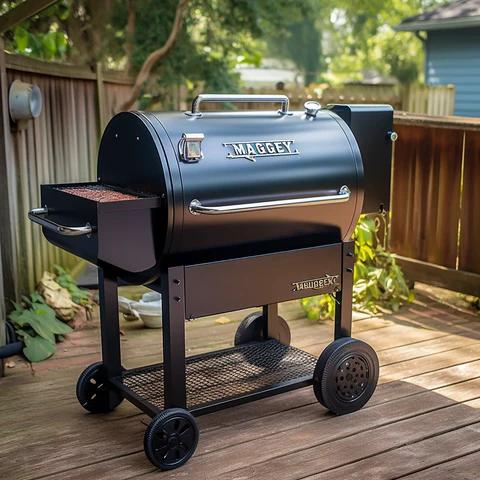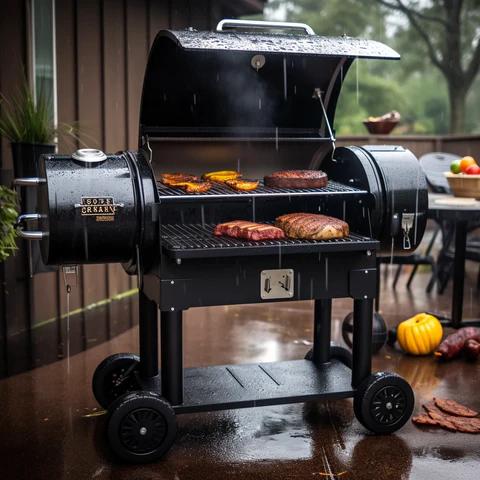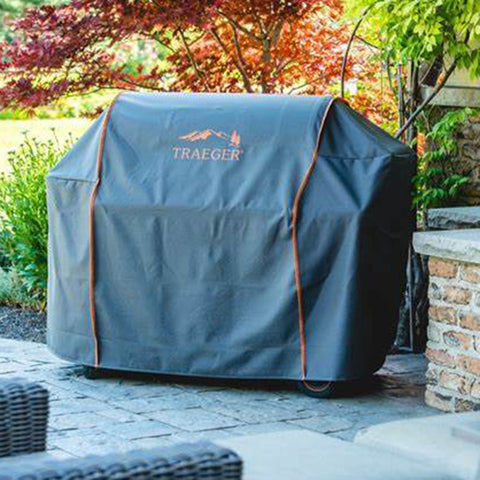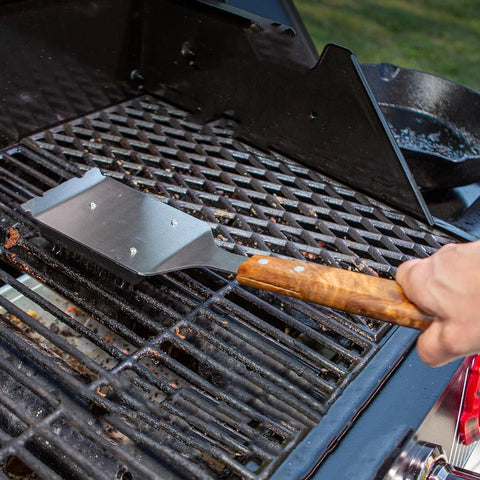What should you do if the grill is struggling to reach the desired temperature? The frustration is palpable, akin to an unwelcome guest at your culinary celebration.
A hot grill is the heartbeat of successful outdoor cooking. It’s the gateway to achieving those coveted grill marks, sealing in juices, and imparting that unmistakable smoky flavor. The temperature intricacies play a pivotal role in transforming raw ingredients into mouthwatering masterpieces.
But fear not, for this culinary conundrum is not insurmountable. In this article, we’ll delve into the crucial nuances of grill temperature, unearthing the common culprits behind the temperature struggle and providing actionable solutions. Elevating your grilling game begins with understanding the pivotal role of grill temperature, identifying the obstacles, and embarking on a journey to ensure that every cookout is a resounding success. Let’s uncover the secrets to grill mastery and let your culinary creations thrive in the realm of perfectly heated grills.

Part 1: Gas Supply Issues for Gas Grill: Ensuring a Steady Flow of Flames
Gas Tank Level: Diminished Power Source
When it comes to grill performance, the heartbeat lies within your propane tank. A low or, worse, an empty tank can spell disaster for achieving optimum heat output. Propane is the fuel that drives the fiery dance on your grill grates, and its depletion means a feeble flame – a far cry from the searing power you seek. With dwindling gas, the grill’s capability to reach high temperatures diminishes, leaving your culinary dreams in the lurch.
Regulator Problems: The Symphony of Gas Flow
Meet the regulator – the unsung hero that orchestrates the delicate ballet of gas flow. Like any maestro, it thrives on harmony, but disruptions can lead to a disappointing performance. Blockages or malfunctioning regulators can throttle gas flow, robbing your grill of the intense heat needed for grilling glory. Imagine a bottleneck in a bustling city – traffic stalls, movement falters, and the destination remains elusive. Similarly, regulator hiccups can hinder gas flow, translating to lackluster temperatures and underwhelming results.
Leaking Gas Hose: Protecting Heat and Safety
Regularly checking for gas leaks is paramount. Beyond disrupting heat distribution, leaks pose grave safety risks. Escaping gas combined with flames can lead to flare-ups, fires, and potential harm. Prioritizing leak checks ensures not only optimal grilling performance but also a secure and enjoyable cooking experience. 
Part 2: Ignition and Burner Woes: Navigating Grill Hindrances
Ignition Failure: Sparking Disappointment
In the realm of grilling, a well-functioning ignition system is akin to a magician’s wand – it ignites the fiery spectacle that turns raw ingredients into gastronomic marvels. Yet, a faulty ignition system plays the role of a reluctant performer, robbing you of the grand opening act. Picture this: the anticipation of flames dancing on the grates, only to be met with an eerie silence. A malfunctioning ignition switch, a worn-out electrode, or electrical glitches – any of these can shatter the ignition’s magic, denying the burners their much-needed spark. The result? A culinary canvas left untouched, dreams of a sizzling masterpiece unfulfilled.
Burner Blockages: Hindrances to Heat Harmony
Imagine the burners as the heart of your grill – pumping out heat to transform ingredients into succulent wonders. But even a heart can succumb to blockages. Debris, grease, and tiny trespassers like insects can infiltrate, leading to clogged burner pathways. Much like a traffic jam on a bustling highway, this obstruction disrupts the flow of heat, resulting in uneven cooking and frustrated taste buds. The consequence of this blockade extends beyond impaired heat distribution; it’s a setback that dulls the thrill of grilling creativity. 
Part 3: Ventilation and Airflow: The Breath of Grilling Power
Blocked Venturi Tubes: A Stifled Dance of Elements
Picture your grill as a symphony of elements – gas and air coming together in perfect harmony. Enter the venturi tubes, the conduits of this elegant dance. When these vital tubes are obstructed, their ability to blend air and gas into the ideal mixture is stifled. Imagine a maestro being handed a mute instrument – the symphony falters, and so does your grill’s heat generation. Blocked venturi tubes disrupt the delicate equilibrium, resulting in diminished flames and thwarted cooking ambitions.
Clogged Air Vents: Navigating the Heat Control
Now, consider air vents as the conductors of your grill’s heat orchestra. These vents are gatekeepers, regulating the flow of oxygen that fuels the fiery performance. But even conductors can falter when confronted with obstructions. Clogged air vents deprive your grill of the oxygen it craves, much like a singer struggling to catch their breath mid-performance. The result? Poor heat control, erratic temperatures, and lackluster culinary outcomes.

Part 4: Worn or Damaged Components: Culprits of Heat Deterioration
Worn Heat Diffusers: Dimming the Flame’s Embrace
In the theater of grilling, heat diffusers play the role of spotlight holders, distributing radiant warmth to every corner of the stage – your grill grates. Over time, these unsung heroes can become worn, battered by the relentless heat and grease. With their integrity compromised, their ability to evenly spread heat wanes. Picture a flickering spotlight – some areas shine brightly while others remain shrouded in darkness. Similarly, worn heat diffusers lead to uneven heat distribution, casting shadows over your culinary aspirations.
Damaged Burners or Igniters: Igniting the Heat Conundrum
Burners and igniters are the dynamic duo behind the fiery spectacle of grilling. But even heroes age and succumb to wear. Worn burners struggle to generate the intense heat needed for culinary excellence, while malfunctioning igniters refuse to initiate the dazzling performance. Imagine a performance without its protagonists – lackluster, devoid of energy, and far from memorable.
As the mercury drops, so can your grill’s performance. Colder temperatures constrict the gas within your propane tank, leading to reduced gas pressure. This drop-in pressure hinders the grill’s ability to reach and sustain high temperatures. It’s akin to an athlete performing in freezing weather. 
Part 5: Troubleshooting Steps to Fix Gas Grill Not Getting Hot
Gas Tank Check and Replacement: Propane Prowess
Before firing up your grilling escapade, conduct a propane patrol. Ensure your gas tank is filled or adequately topped up. Running out of gas midway through a cookout is a culinary cliffhanger you’d rather avoid. If the gauge signals emptiness, embrace a timely refill or replacement to keep the fiery spectacle ablaze.
Regulator Inspection: Nurturing the Gas Flow
The regulator – your grill’s airflow maestro – deserves regular scrutiny. Gently inspect and clean it, ensuring unobstructed passages. Clear away dirt, grime, or anything that dares hamper the gas flow. A regulator in pristine condition orchestrates a symphony of gas and air, breathing life into the flames.
Burner and Ignition Maintenance: Flawless Flare Creation
Elevate your grilling act by giving burners and igniters their due attention. Wipe away the residue of past performances, ensuring they’re clean and debris-free. Ignition systems deserve some extra love – ensure they spark with vigor, their role as flame-initiators unimpeded.
Ventilation and Airflow Adjustment: Oxygen’s Pas de Deux
Venturi tubes and air vents are the wind beneath your grill’s wings. If they’re obstructed, your culinary dance falters. Clear venturi tubes of any blockages, letting gas and air pirouette effortlessly. Unshackle air vents from debris, allowing them to control the oxygen’s delicate ballet for optimal heat harmony.
Component Replacement: A Refresh for Grill Vitality
Worn parts can dampen your grilling symphony. Reinvigorate your grill by swapping out damaged components. New heat diffusers, spry burners, and eager igniters breathe fresh life into your culinary stage, ensuring every performance is a resounding success.
Conclusion
When your gas grill’s heat falters, it’s often due to issues like low gas levels, regulator problems, clogged components, or chilly weather. Don’t despair – troubleshooting is your secret weapon. Start with a gas tank check, then inspect and clean the regulator. Nurture burners and igniters, clear venturi tubes, and embrace component replacements when needed. Through these steps, you’ll reignite the flames of culinary glory. Remember, regular maintenance is the key to grill longevity and impeccable performance. A little care goes a long way – ensuring consistent heat, flavors, and unforgettable grilling moments.
FAQs
How do I check the gas tank level?
To check the gas tank level, carefully lift the tank and gauge its weight. Alternatively, you can use a scale to measure its weight. If the tank feels significantly lighter or the weight is low, it’s time for a refill or replacement.
What should I do if the regulator is malfunctioning?
Inspect the regulator for any visible damage or blockages. Clean it gently if needed. If the issue persists, consider replacing the regulator. A functional regulator ensures proper gas flow and optimal heat.
How can I clear clogged burners?
Carefully remove the burners and clean them with a wire brush or grill brush. Make sure to clear any debris, grease, or residue that might be obstructing the burner ports. Properly cleaned burners ensure even heat distribution.
from Fox Heights Pub and Grill – BBQ Recipes https://foxheightspubandgrill.com/blogs/bbq-recipes/troubleshooting-guide-why-is-my-gas-grill-not-getting-hot-common-issues-and-solutions
via IFTTT
from Fox Heights Pub and Grill https://foxheightspubandgrill.blogspot.com/2023/08/troubleshooting-guide-why-is-my-gas.html
via IFTTT































